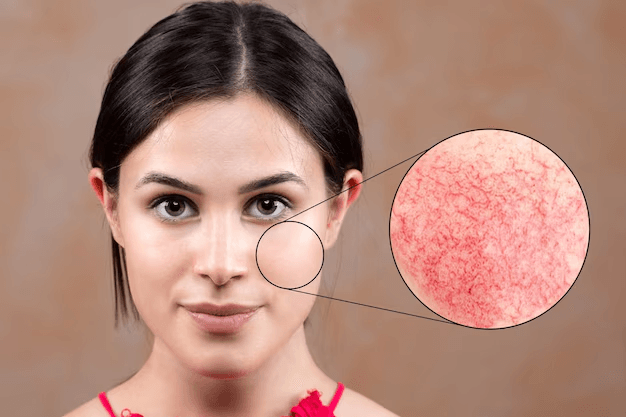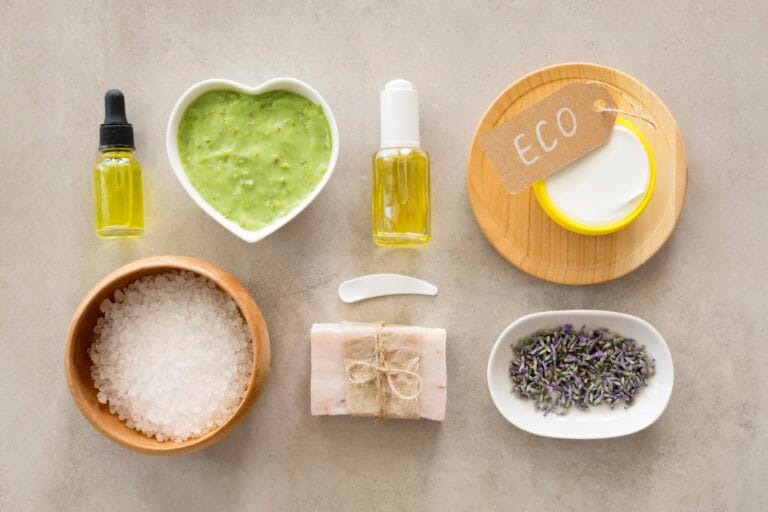
Safety of Active Ingredients for Rosacea Proven Through Lab Tests

- Understanding Rosacea and Its Symptoms
- Skincare Active Ingredients That Exacerbate Rosacea
- Recommended Skincare Ingredients for Rosacea
- Rosacea Treatment Guide
- Important Steps for Safe and Reliable Skincare
Understanding Rosacea and Its Symptoms
Rosacea is one of the chronic inflammatory skin conditions that can affect a person’s appearance. Rosacea typically occurs in the centrofacial area, including the cheeks, chin, nose, and forehead, and is characterized by redness, persistent erythema, inflammatory papules/pustules, and telangiectasia. The main triggers of rosacea include inflammation, increased cathelicidin production, innate immune system dysfunction, and more. Symptoms may include burning or stinging sensations, dry skin, and red swelling (edema). Although not contagious, rosacea can be aesthetically and emotionally distressing for sufferers.
Rosacea can affect anyone, but it most commonly occurs in women aged between 30 and 50, especially those with fair skin. The exact cause of rosacea is not fully understood, but chronic inflammation, elevated levels of the peptide cathelicidin, skin barrier dysfunction, and imbalances in the innate immune system are believed to contribute to its development. In addition, external triggers such as sun exposure, consumption of spicy foods, alcohol, emotional stress, and extreme temperature changes can worsen symptoms.
Skincare Active Ingredients That Exacerbate Rosacea
Certain ingredients may irritate or aggravate rosacea, including alcohol, witch hazel, menthol, fragrance, peppermint oil, and eucalyptus oil. Therefore, people with rosacea must be cautious when choosing skincare products. In terms of treatment, rosacea management is typically categorized into topical, oral, and procedural therapies.
Commonly prescribed topical treatments for papulopustular rosacea (PPR) include metronidazole, azelaic acid, and sulfacetamide-sulfur combinations. For more severe cases, oral therapy using tetracycline-class antibiotics (such as doxycycline and minocycline) may be used, primarily for their anti-inflammatory effects rather than to combat infection.
Recommended Skincare Ingredients for Rosacea
Several compounds are recommended by dermatologists for individuals with rosacea, such as azelaic acid, niacinamide, tranexamic acid, centella asiatica, and vitamin C. These ingredients work to “calm the skin,” reduce redness, and alleviate irritation. In addition, many of them possess anti-inflammatory and antioxidant properties that help diminish inflammation, strengthen the skin barrier, and improve the appearance of hypersensitive skin. A combination of these ingredients may help improve skin texture, reduce visible redness, and enhance the skin’s tolerance to external flare-up triggers.
Rosacea Treatment Guide
For individuals with rosacea, the use of harsh exfoliants and irritating active ingredients like retinol or high-concentration AHAs is discouraged. High-protection sunscreen is strongly recommended before outdoor activities. By repairing the skin barrier, symptoms like redness, burning, and irritation can be alleviated.
Daily skincare should begin with a pH-balanced facial cleanser that contains no scrubs or aggressive exfoliants. After cleansing, apply a moisturizer immediately to hydrate and reinforce the protective skin layer. Recommended moisturizing ingredients include ceramides, panthenol, hyaluronic acid, and squalane.
Since rosacea-prone skin tends to be more sensitive, using minimalist skincare products helps reduce potential adverse reactions. The core products to include in daily care are facial cleanser, moisturizer, and sunscreen. By understanding the characteristics of rosacea, along with its triggers and treatment options, individuals can take the right steps to effectively manage the condition.
Consistent care with suitable products, a healthy lifestyle, and skin protection from external factors are essential in minimizing symptoms and preventing relapses. Pay close attention to which chemical ingredients to avoid and which ones are beneficial for alleviating rosacea symptoms.
Important Steps for Safe and Reliable Skincare
Before a skincare product is released, or even while it's still in the formulation stage, ensuring the safety and effectiveness of active ingredients is crucial, especially for sensitive skin conditions like rosacea. Many ingredients that appear safe can actually trigger irritation, increase inflammation, or decrease skin tolerance if they don't undergo proper laboratory testing. This is where lab testing plays a crucial role in ensuring that each ingredient in a product truly works as claimed and is safe for use by consumers with various skin types, including those with specific conditions.
Read more:
3 Recommended Cosmetic Testing Laboratories for Marketing Authorizations!
Want to ensure your skincare products are safe, effective, and ready to enter the market with complete confidence?
IML Research provides comprehensive, accurate, and reliable active ingredient lab testing and skincare formulation testing services. From ingredient safety analysis and product stability to active ingredient verification, everything is carried out according to strict testing standards. Entrust your product testing process to IML Research to ensure every formulation you create is truly safe before it's marketed.
Author: Delfia
Editor: Sabilla Reza
References:
Levin, J., & Miller, R. (2011). A Guide to the Ingredients and Potential Benefits of Over-the-Counter Cleansers and Moisturizers for Rosacea Patients. The Journal of clinical and aesthetic dermatology, 4(8), 31–49.



